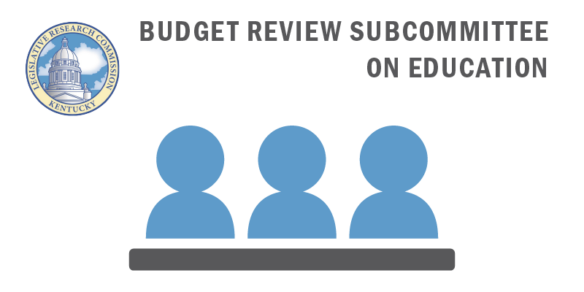
Representatives of the Kentucky Department of Education (KDE) updated lawmakers on how federal COVID-19 relief dollars are being spent during a Kentucky House of Representatives Budget Review Subcommittee meeting on Feb. 28.
Kentucky received billions of dollars from three federal COVID-19 relief packages: the Coronavirus Aid, Relief and Economic Security (CARES) Act, the Coronavirus Response and Relief Supplemental Appropriations (CRSSA) Act, and the American Rescue Plan (ARP) Act.
All three pieces of legislation included funding for the Elementary and Secondary School Emergency Relief (ESSER) Fund. The CARES Act also created the Governor’s Emergency Education Relief (GEER) Fund, while CRSSA and ARP created the Emergency Assistance to Non-Public Schools (EANS) program.
Altogether, the Commonwealth received $3.2 billion for education through the relief packages, a large portion of which went into ESSER:
- ESSER I (CARES Act): $193 million
- ESSER II (CRSSA): $928 million
- ARP ESSER: $2.001 billion
Associate Commissioner Robin Kinney, who oversees the KDE Office of Finance and Operations, broke down how much is left with each round of ESSER funding through Jan. 31:
- ESSER I: A minimal balance of $15,660 was unexpended by the Sept. 30, 2022, end of grant term
- ESSER II: $206 million left to spend by Sept. 30, 2023
- ARP ESSER: $1.279 billion left to spend by Sept. 30, 2024
By law, 90% of ESSER funds must go to local school districts.
“Schools did a good job of spending their dollars,” she said about the ESSER I dollars.
Regarding what is left in the other funds created by federal pandemic relief legislation:
- GEER I (CARES Act): A minimal balance of $1,087 was unexpended by the Sept. 30, 2022, end of grant term
- EANS I (CRSSA): $10.3 million left to spend by Sept. 30, 2023
- EANS II (ARP): $22.7 million left to spend by Sept. 30, 2024
State Rep. Scott Lewis, a member of the budget review subcommittee, said Kentucky students are still lagging behind in their education and he asked about ways to use the remaining funds. Kinney explained that school districts already have received their share of the funding and they still have time to expend the dollars they have available, which could go toward summer reading programs and other initiatives to help students.
SEEK funding
KDE also updated lawmakers on school funding through the Support Education Excellence in Kentucky (SEEK) formula. The SEEK program is a formula-driven allocation of state-provided funds to local school districts for costs, including transportation and help for low-income and special needs students.
KDE Division of District Support Director Chay Ritter said funding typically “ebbs and flows” because of changing property assessment and student population data each year.
Calculations for the SEEK funding formula are based on average daily attendance, but that data has been frozen for the past three school years due to the COVID-19 pandemic. However, school district attendance is currently being calculated for school funding for the upcoming school year.
Ritter said beyond the concerns of attendance, some districts experienced natural disasters that could lead to fewer students enrolling and attending classes. Some districts actually saw growth during the pandemic, which also could make the SEEK calculations tricky. Property assessments have gone up significantly due to inflation and other economic factors in recent years, complicating matters further.
Because of the freeze in average daily attendance for the purposes of SEEK funding, Rep. Lewis and other lawmakers expressed concern for districts that have seen significant changes in student population with no corresponding shift in SEEK funding, but Lewis also signaled a desire to work with KDE to solve these issues.
“Hopefully, by the end of this session, we can address some of these things,” said Lewis.




Leave A Comment